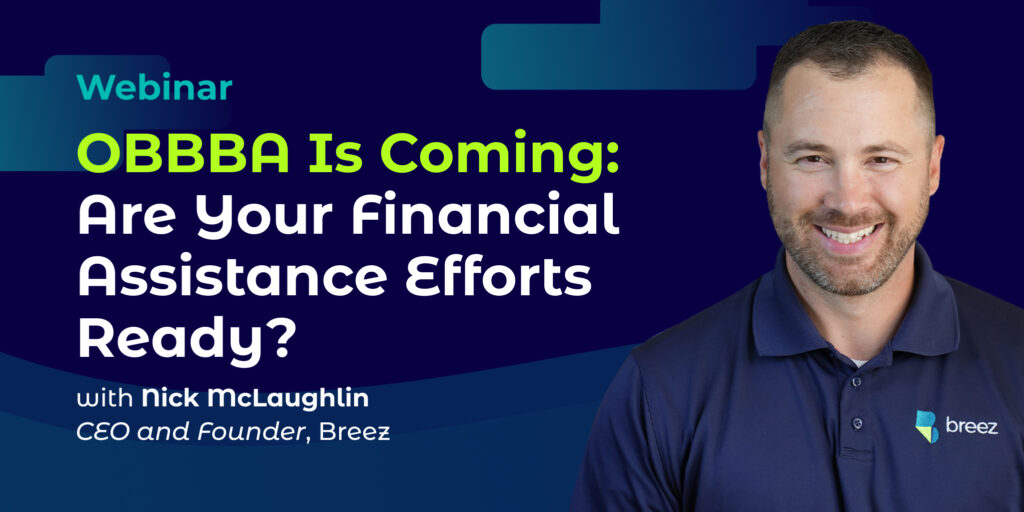In today’s expensive healthcare landscape, it’s crucial to ensure patients have access to financial assistance programs. This is partially mandated due to 501(r)(4), a section of the Internal Revenue Code brought about by the Affordable Care Act that requires nonprofit hospitals to provide adequate assistance to patients in need to maintain their tax-exempt status.
While compliance with the 501(r)(4) requirements is mandatory, hospitals have an important role to go beyond mere compliance and enhance affordability and accessibility for patients.
We know what you’re thinking—with what resources? It’s not a secret that hospitals already have too much on their plate and too little budget to do it with. But by following our checklist, hospitals can make changes without the need for additional resources.
501(r)(4) Eligibility Criteria & Checklist for Improved Patient Experience
501(r) leaves it up to the hospital to set eligibility criteria. Your hospital’s FAP policy must specify the criteria an individual must satisfy to receive a discount. Any eligibility criteria you use to approve or deny financial assistance should be clearly identified and defined in your hospital’s FAP policy document.
Checklist and steps for improved patient financial experience and accessibility
- Update your policies and eligibility criteria to reflect your current practices.
- Make your financial assistance policy easy to find on your website.
- If you require asset tests for eligibility, make them reasonable and clear. For example, “A patient is not eligible for financial assistance under this policy if the patient’s household has qualifying assets valued at $50,000 or more. Qualifying assets include checking or savings account balances, Health Savings Accounts, and equity in non-primary residence real estate.”
- If you do have additional resources available, create a customized online platform (or partner with Breez to make things simple!) for patients to easily check eligibility.
501(r)(4) Methods for Applying & Checklist for Improved Accessibility
According to 501(r)(4) requirements, your financial assistance policy must describe how to apply for financial assistance, what information is required on the application, what documentation is needed along with the application, and how a patient can obtain an application.
Checklist and steps for improved patient financial experience and accessibility
- Simplify your financial assistance application to be more patient friendly.
- Instead of sending patients on a hunt for a paper form, consider offering a self-serve, quick and easy digital application to make things simple and more patient centered.
- While you should require W-2s, proof of income and, sometimes, a Medicaid denial letter, you shouldn’t require mortgage statements, rent receipts, property tax bills or copies of utility bills. Not only does it put an extra burden on the patient to acquire all of these pieces, but it also means more work, paper pushing and administrative burden for hospital staff.
- Remember: the shorter the application process, the better for everyone!
501(r)(4) Widely Publicized Financial Assistance Policy & Checklist for Improved Accessibility
This part of 501(r) requires nonprofit hospitals to post financial assistance policy documents on the hospital’s website and make paper copies available upon request at no cost to patients. It also requires hospitals to “notify members of the community about the financial assistance policy in a manner reasonably calculated to reach those members of the community who are most likely to require financial assistance.”
Checklist and steps for improved patient financial experience and accessibility
- Develop partnerships with local organizations—your community and advocacy groups—to reach underserved populations and provide information about financial assistance and how to apply.
- Leverage your navigators and advocates to help patients understand their options for financial assistance.
- Implement text message campaigns to spread the word about your hospital financial assistance program.
- Add QR codes or inserts to every bill that directs patients to your financial assistance policy and application.
- Consider outsourcing this task to an expert external partner who can optimize your program and its reach.
The truth is that hospitals can serve even more patients in need by offering easy-to-use tools where they can access and navigate financial assistance programs on their own.
It’s critical for hospitals to invite all eligible patients to apply for financial assistance online. These tools mean more patients engaged in your platform, fewer patients in collections, more affordable access to care and more reimbursement from third party payers.
Editor’s note:
Breez Health simplifies patient-facing and internal financial assistance/charity care processes, empowering hospitals to drive organizational growth and affordability of care to vulnerable members of their communities. By unlocking revenue opportunities that were previously lost to bad debt, Breez simultaneously helps support the financial wellness of nonprofit hospitals.



